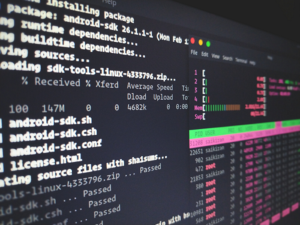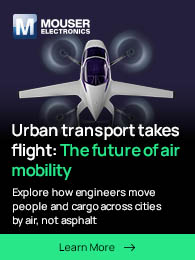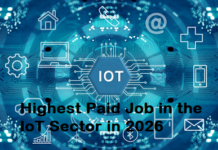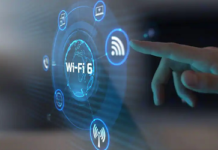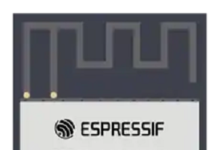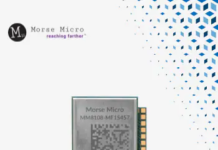The pandemic caused a big change in the plans and predictions of the past year. It has transformed how businesses operate and has caused significant damage to all economic sectors. It influenced our behavioral patterns and the way we buy things. Nowadays more and more people switch to online shopping as the only solution in conditions of lockdowns and social distancing regulations.
This customer behavior is set to continue even after normalcy across the globe is regained. Several countries today are back to normal operations but online businesses are still reaping profits, thanks to the convenience they bring to their customers. Rather than walking to a nearby store, customers today prefer ordering their items through online platforms and waiting for them to be delivered at their doorstep.
So, online store owners optimize their websites to provide a more pleasant customer experience and build Magento progressive web apps, making their sites faster and mobile friendlier. Plus, companies began to worry about the efficiency and consistency of their processes. This gave additional impetus to the development of automation and the Internet of Things.
In this article, we’ll take a look at the most relevant automation trends and the top 5 predictions for the Internet of Things.
Automation Trends You Should Be Aware of
1. Hyper-Automation
Hyper-automation is the combination of various business process automation techniques with AI and RPA tools. The combo is used for replacing or enhancing human labor with machines. For instance, you can invest in scheduling and batch processing software like the one offered by https://www.jamsscheduler.com/job-scheduling/ to run repetitive tasks and ensure that the desired goals are met. Choosing the right combination of tools won’t only enhance your operations but also save time and money, which are the two main currencies in any business.
The essence of hyper-automation is to create a structure around chaos and hone automated processes by themselves. This leads to even more efficient automated workflows based on analytics-derived ROIs.
The Gartner study says that organizations will continue to combine hyper-automation technologies with redesigned operational processes. And by 2024 this will allow them to lower operational costs by 30%.
2. Thriving of RPA
RPA, which stands for robotic process automation, is a type of IT solution that makes it possible to harness specialized software programs to automate day-to-day tasks.
This will free employees from mundane repetitive duties, eliminate staff errors, and increase work efficiency. All of this is critical as companies face the need to cut costs in a COVID-19 pandemic business environment and constantly improve the quality of their work.
Many companies and organizations across every sector, such as healthcare, financial services, insurance, and human resources, are turning to robotic process automation (RPA). This automation trend provides many business benefits, especially for modern workplaces or work-from-anywhere (WFA) settings.
According to Statista forecasts, RPA market revenues worldwide will eclipse more than $10 billion by 2023. From this it follows that RPA will become more and more mainstream, going beyond just the IT-sphere.
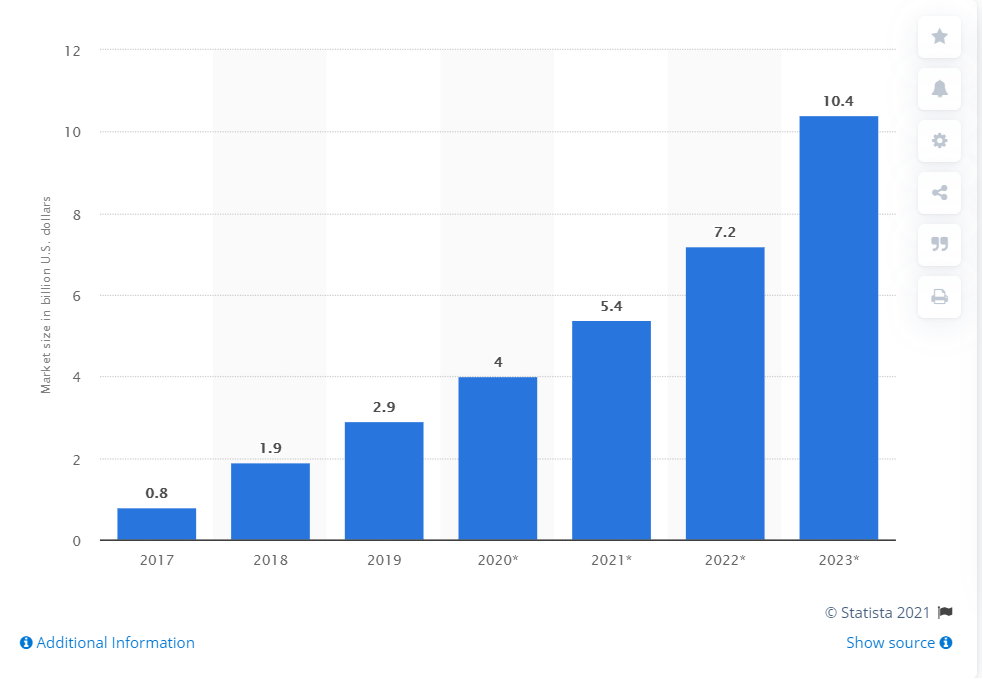
Advantages Of Using Robotic Process Automation
Using RPA software can help various businesses in the following ways:
- Boosts Employee Productivity: Key employees can focus on other aspects of business operations that need comprehensive human knowledge and skills by using RPA. This automation technology changes the way they operate, wherein software bots can perform repetitive tasks more accurately, efficiently, and quickly to reduce the burden on employees.
- Optimizes Business Processes: This technology helps pave the way to digital acceleration, optimizes resources, and maximizes efficiency. RPA software robots can easily manage business processes across different locations, systems, and departments, over the cloud or on-premise.
- Seamless Integration: RPA software bots can communicate with business applications and systems like how humans perform using the same workflow. RPA can integrate workflows seamlessly across the enterprise because of its flexibility and scalability.
- Promotes Digital Workforce Scalability: Enterprises can scale their digital workforce using RPA software. This automation technology can work alongside human employees in remote, hybrid, or in-house work settings.
Learn more about robotic process automation at https://www.helpsystems.com/solutions/automation/robotic-process-automation.
Internet of Behaviors Growth
One example of the internet of behaviors (IoB) is a health app on your smartphone. You share information about your diet, sleep patterns, and even your heart rate. The app, in its turn, suggests behavioral modifications to prevent adverse situations and achieve a more positive or desired result.
Every day, we share a huge amount of personal information from social media, location, and health data monitoring using wearable devices. Based on this data, IoB synthesizes patterns of each of us that companies can use.
This can jeopardize privacy but will help companies build up their strategy in terms of our interests and preferences to impact our behavior. By the end of 2025, at least one IoB program (either private, commercial, or governmental) will be embedded into the lives of over half of the world’s population.
IoT Predictions for 2021 You Should Not Miss
1. Industrial Automation
With all the disruptions and uncertainty of 2020, the benefits of automation and faster digital transformation became obvious in manufacturing, supply chains, and services.
Businesses now are trying to reduce operators on factory floors with the help of robotics, machine learning, and remote maintenance. This is necessary to avoid work failures and to reduce human intervention.
Nevertheless, it is impossible to completely replace people in most manufacturing, industrial, and logistics operations. So the IoT along with automation will alert personnel when their intervention is required.
Moreover, safety and adherence to social distancing rules became a new norm. Devices and services that help manage facilities, keep workers apart, and ensure proper cleaning and sanitation became top priorities for enterprises.
2. Healthcare Technology
Intelligent wearables, sensors, and connected devices will be used to minimize contact and maintain social distance. This is especially essential in situations where the risk of viral infection is especially high, for example, in nursing homes and infectious diseases wards in hospitals.
The ongoing pandemic and uncertainty have accelerated the implementation of the technological transformation of healthcare. The number of “virtual visits” to doctors in the US was originally expected to be 36 million, but in reality, it turned out to be close to one billion and continues to grow.
A large number of health-related sensors and other medical technologies will assist elderly and disabled people who are left alone at home. AI and other technologies will monitor health conditions to alert relatives or healthcare professionals that intervention may be required.
3. Work-from-Home Management
As the need to adapt to working from home emerged, many companies have focused on developing AI-powered personal assistants like Alexa. They are designed to manage your day when working remotely, make planning easier, and organize your personal calendar.
Also, an important sphere is improving the quality of interactive video conferencing and virtual meeting technologies to ensure better interaction. For example, the Azure Kinect sensors used in the Microsoft Virtual Stage platform support artificial intelligence-powered presentation immersiveness.
4. Advent of 5G
According to Ericsson, there are already one billion people using 5G networks. The technology is expected to cover up to 40% of cellular subscriptions by 2025, making 5G the fastest growing mobile technology in wireless history.
High speed, increased bandwidth, low latency, and high power can dramatically speed up IoT connectivity. 5G is already used in critical applications such as:
- remote surgery,
- autonomous vehicles,
- industrial control,
- automated ports,
- military operations,
- and others.
Over the next five years, the number of critical IoTs with cellular connectivity will grow in double-digit percentages.
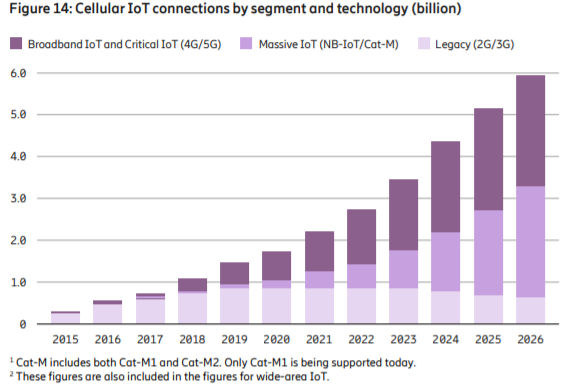
Smart Cities
IoT technology will help in realizing the “smart city” concept too. Various devices are used to monitor traffic on road networks, the use of public transport, and even in street lighting. With smart meters, you can keep an eye out on energy use in homes and businesses to balance consumption and avoid wastage where possible.
Take the smart LED street lights as an example. They have replaced millions of street lights in many cities around the world. They turn on only when a pedestrian or a car approaches them and automatically turn off when there is no continuous movement in their area. That’s how they significantly saved energy and set a positive example for other cities.
Final Thoughts
New services and opportunities are now boosting fast digital transformation making our lives smarter, easier, and healthier. While the contact between humans remains limited, devices, tools, and toys can help us to remain connected. In general, all the trends and predictions prove that IT’s role will become more prominent and that businesses will need to adapt to agility, transformation, and constant change.
The current change in customer behavior is pointing towards a world where people will be dependent on digital tools to run and accomplish their tasks. The eCommerce industry, for instance, gained a lot of popularity during the Covid-19 pandemic and that impact is likely to be felt through the coming years. So, if you’re running any kind of business, it’s imperative that you start thinking about how you’ll automate your operations to meet the current standards. That way, you’ll be able to compete with the best and remain relevant in this ever-evolving market.

About the Author: Kate Parish, Chief Marketing Officer at Onilab with 8+ years of experience in Digital Marketing and website promotion.



